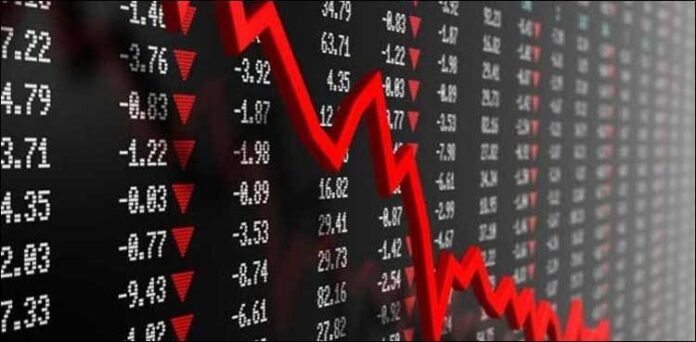On June 13, Profit reported that the interbank was out of dollars. As a result the forward premium grades on the dollar were selling at a discount. On Monday and Tuesday last week, the one-week, two-week, one-month, two-month, and three-month tenor sold at a discount. A discount happens when the forward exchange rate is less than the spot rate (the ready or immediate rate).
However, after a cut in the Cash Reserve Ratio (CRR) and Special Cash Reserve Requirement (SCRR), reported by Profit on June 21, the discounts turned into a premium once again. As a result, the exchange rate rode a roller coaster through the week, rising from Rs210 (selling rate in the interbank market on Monday open) to a high of Rs212 by Wednesday, triggering a string of headlines across TV screens breathlessly announcing the “highest ever interbank rate in history” for the dollar.
But then it plunged sharply on Thursday, opening at Rs208, down by a whole Rs4 in a stroke. By Friday it maintained this level as the week drew to a close. The impact of the SCRR cut was almost immediate, it seems.
There has been no one specific cut for all banks, as per Profit reporting – banks are supposed to request for cuts, and the State Bank of Pakistan (SBP) will decide on a case-to-case basis. The SBP has made no official announcement regarding the cuts either.
Taking the foreign exchange deposits held on May 2022 as per FE-25, a 1% drop in the CRR or SCRR injects $72.88 million into the interbank, given that total foreign exchange deposits are around $7.288 billion as of May 2022. This cut in CRR worked to inject liquidity into the interbank, sending premiums back into positive territory.
In the past, in April 2020, at the height of the pandemic, the SBP slashed the SCRR from 15% to 10% through circular no. 08 issued by the SBP’s Domestic Market and Monetary Management Department. Currently, the CRR stands at 5%, and the SCRR at 10%.
Before that, the combination of CRR and SCRR had been more or less unchanged since 2002, In fact, there was only one temporary reduction in December 2007. In that fateful year, when the Great Financial Crisis was approaching, and amid a massive withdrawal of dollars, the SCRR was slashed from 15 percent to 5 percent. This was reversed six months later.
The CRR is the minimum percentage of a bank’s deposits that are to be held in the form of cash. It is applicable on demand liabilities and time liabilities with tenor of less than a year. The banks, however, don’t hold this cash themselves. Instead, it is deposited with the SBP. The CRR does not earn interest for the bank.
The SCRR is the minimum percentage of deposits that a bank has to maintain in the form of cold cash or other approved securities. It is the ratio of liquid assets to the demand and term liabilities or deposits. Banks are able to earn interest on the SCRR.
PSX and rupee down
Conversations with branch managers of a few banks suggest that the last week saw heavy withdrawals from foreign currency accounts of retail savers, mostly out of concern that a repeat of the freezing of these accounts from 1998 could be in the offing. The fears are clearly misplaced, especially with the arrival of $2.3 billion from the Chinese rollover on Friday (finally!).
Despite appreciating following the reduction in the CRR, the PKR reversed Thursday’s gain on Friday, and appreciated 0.12 percent closing at Rs207.48. Earlier this week the PKR was shy of 210.
However, it is important to note that Friday’s performance of the PKR is heavily dependent on the “super tax” imposed by Prime Minister Shahbaz Sharif, which also caused the PSX to nosedive, flirting with the market’s circuit breaker of a 5% decline.
Sharif announced that the government will be imposing a “super tax” of 10% on large scale industries to increase revenues to support the economy. These sectors include cement, steel, sugar, oil & gas, fertilizers, LNG terminals, textile, banking, automobile, cigarettes, beverages, and chemicals.
Mother of all OMOs: 77-Day injection
Speaking of unprecedented, the SBP announced a 77-day Open Market Operation (OMO) injection into the interbank on Friday.
Earlier this month, in a confidential meeting with the treasurers of commercial banks, the SBP instructed (read: bullied) banks to bring down yields on the request of the government. OMOs are an indirect way the central bank can lend to the government.
Rs 402 billion was injected through this OMO expected to mature in mid September.
The SBP has already locked-in 94% of outstanding OMOs worth Rs 4.1 trillion in 63 day tenors. These OMOs by nature are usually shorter tenors. The SBP has been locking in longer tenor OMOs in order to calm the markets and provide practical forward guidance.
This signifies that it is likely that the monetary policy rate will remain unchanged till maturity in September.
“This combined with developments on IMF can bring yields down to some extent as markets have incorporated c. 100bps increase,” says Fahad Rauf, Head of Research at Ismail Iqbal Securities.
“As per our channel checks, secondary market yields are down by 15-20bps,” says Rauf.
The SBP has never injected through a 77-day OMO before, making this the longest tenor till date. Previously, the highest OMO tenor was 63 days introduced in the last quarter of 2021 to calm markets. The SBP repeated the 63-day OMOs five times before this latest 77-day injection.










I dеfinitely loved every little bit of it and I have you book marked too check .
온라인 카지노
j9korea.com